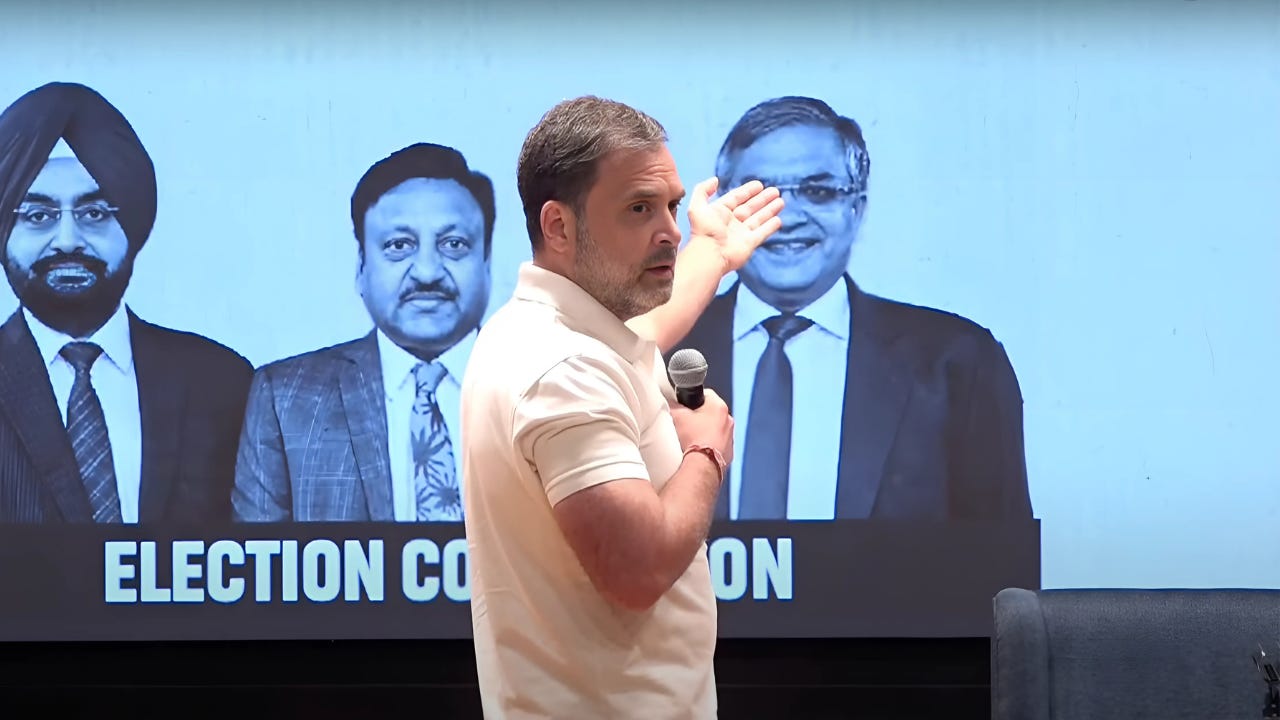5 Reasons why EC’s reply to Rahul Gandhi raises only questions, not answers
The Election Commission’s reply to Rahul Gandhi prompts scrutiny — not only for what it said, but when it said it
By Sanjay Dubey
1. Reply out of turn
The Election Commission’s first public reaction to Rahul Gandhi’s press conference (PC) was notable as much for its timing as for its content. Gandhi was still midway through his 70-minute briefing — having just finished the main part — when the Chief Electoral Officer (CEO) of Karnataka posted a letter in response to his allegations on social media. Shortly afterwards, similar statements came from the CEOs of Haryana and Maharashtra, all quickly echoed by the EC’s own official account.
The speed alone suggests this could not have been a considered reply to Gandhi’s detailed allegations. The content reinforced that impression. For example, at one place it states, “It is understood that during a Press Conference held today, you had mentioned about the inclusion of ineligible electors and exclusion of eligible electors in the Electoral Rolls…”
This is factually incorrect. Had the EC listened carefully before writing its response — or simply waited until Gandhi finished — it likely would not have done that. In the later part of his briefing, Rahul specifically mentioned,“we have only shown voter addition (inclusion of ineligible electors). There is also something called voter subtraction (exclusion of eligible electors). We know that it is almost of the same scale, but, we haven’t got the data to assert that, so, we are not talking about.”
Rather than engaging with the core issues or showing any intent to address them, the EC’s response clearly looks like what it likely was — a hastily drafted, centrally co-ordinated standard bureaucratic note, leaning completely on unnecessary technicalities. The urgency seemed less about fact-finding and more about seizing control of the narrative before it could take shape in the public mind.


